Ertach Kernow - Sir Humphry Davy a great son of Penzance
Cornwall with its relatively small historical population has outshone many English counties with the wide range of people who have made huge contributions to the world. This week marks the death of one of those people, Sir Humphry Davy on 29th May 1829 aged just 50 years old. Who can say how much more he would have accomplished had he lived longer?
Born in Penzance on 17th December 1778 the eldest of five children born to Robert and Grace Davy, Humphry and his brother John far exceeded what could have been expected of them at the time. Penzance during the 18th century was not a place conducive to science and literature but had a grammar school where at the age of six he started his education, finishing there in 1793. His father died at the early age of 48 in 1794 and Humphry was fortunate to have had a godfather, John Tonkin, who paid for him to extend his education allowing him to attend Truro Grammar School. It was here that the literary side to his character emerged more fully and over his life he would write over 160 poems and descriptive verses.
Davy had a chance meeting with Davies Giddy, better known to Cornish history as Gilbert Davies, whilst studying medicine with Dr Borlase in Penzance. Giddy allowed Humphry the use of his library leading to him meeting chemistry lecturer Dr Edwards. This in turn led to Humphry being allowed use of Dr Edwards laboratory and making a further number of scientific connections. A Dr Beddoes took Davy under his wing and Humphry enrolled in the Pneumatic Institution at Bristol during October 1798. Here he expanded not just his education and work, but also a range of friends and acquaintance’s many who would help further his career and research, such as James Watt the engineer and chemist.
His work into the gas nitric oxide would forward the understanding this gases potential. Although Davy did not discover nitrous oxide, which was due to the work of Joseph Priestley in 1772, his experimental work published in 1800 named it ‘laughing gas’. His experiments led to greater understanding of its psychotropic properties leading to many new uses including importantly anaesthetics. Experimentation included personally dangerous activities beyond the laboratory and in time included many of his circle of friends. His work in Bristol also involved research and creation of batteries which would aid his future research on chemical elements.
This is the oldest surviving scientific award in the world, having first been given in 1731. Well known recipients have included: Captain James Cook, Michael Faraday, John Couch Adams, Charles Darwin, Louis Pasteur, Albert Einstein, Ernest Rutherford, Francis Crick, Stephen Hawking
Establishment of the London based Royal Institution in 1799 led to Davy being interviewed in 1801 and accepted as an assistant lecturer in chemistry along with other roles. His first lecture was on galvanism, the production of electricity through chemical means. Besides being an excellent researcher Davy was also a very talented and popular lecturer, some lectures it was reported were attended by over 500 people. On 7th May 1803 Humphry Davy was appointed Professor of Chemistry at Royal Institution
Davy now obviously very highly regarded was presented with the Royal Institutions prestigious Sir Geoffrey Copley Gold Medal on 30th November 1805. On 22nd January 1807 he was elected Secretary and Member of the Council of the Royal Institution. Although not the first to carry it out his pioneering methods of isolating elements through the use of electricity during 1807 and 1808 was ground-breaking. This resulted in him isolating barium, boron, calcium, magnesium and strontium, also discovering and proving the fundamental nature of chlorine and iodine against the theories of other scientists.
Between 1802 and 1812 Davy carried out a course of eight lectures for the Board of Agriculture entitled ‘Elements of Agricultural Chemistry’. He first published these in 1813 and the book was so highly regarded it was republished after his death in 1844, with the benefit of additional notes added as a result of experiments by eminent Chemists based on Davy’s work.
On 9th April 1812 Davy received a knighthood from the Prince Regent and the following day married Mrs Jane Apreece at a private ceremony held at the brides mothers house in Portland Place, officiated by the Bishop of Carlisle.
An injury that effected his sight took place at this time and he also gave up his lecturing position at the Royal Institution, being appointed Honorary Professor of Chemistry. During the ongoing war between Britain and France, he and his wife were permitted to travel to France in 1813 by Napoleon, to collect ‘Prix du galvanisme’ an award created by Napoleon in 1801 and awarded to Davy in 1807. Just prior to this trip Davy had engaged as an assistant Michael Faraday, who in his own right would become a renowned physicist, chemist and electromagnetism pioneer and one of the most influential scientists in history. Faraday would also accompany them to France as Davy’s ‘valet’. Davy said at one point Faraday was his greatest discovery.
It was on his return that Davy was to work on what he would become best known for, the Davy Safety Lamp. Although not the first but the best and most effective design, the miners safety lamp created by Davy would go on to save countless lives in coal mines throughout the world. Explosive gasses had killed many coal miners and was becoming an issue with mine owners seeking to increase coal production, one of the backbones of Britain’s industrial revolution. He refused to patent the lamp so benefiting society. Davy would go on to receive huge public accolades for this work along with financial benefits and awards from mine owners and others. In October 1818, The Prince Regent granted Sir Humphry Davy the honour of a hereditary baronetcy.
Although Davy’s work related to scientific research and discovery, he was well acquainted and mixed in the circles of other famous and successful people. Through his literary interests writers such as author Sir Walter Scott and poets including Wordsworth and Coleridge were counted amongst his friends and associates. Wordsworth wrote; ‘His conversation was very entertaining, for he had seen much, and he was naturally a very eloquent person’.
Interests in the paint on paintings discovered at Herculaneum and Pompey had led Davy to investigating the chemical construction of those materials. Between 1819 and 1820 a commission by the Prince Regent saw Davy working on unravelling, to read the scrolls discovered in the ruins of Herculaneum. Although only partially successful, through the use of chlorine, he managed to partially unroll 23 of the parchments. He published his findings in 1821.
Sir Humphrey was elected President of the Royal Institution in 1820, but this was a difficult period with various factions vying for recognition. He was re-elected again after his first term, but due to ill health did not stand in 1827 and was followed by his friend Gilbert Davies.
Towards the end of his life Sir Humphry undertook a great deal of travel around Britain and continental Europe, often alone, but would always meet interesting company from a wide range of people including European scientists, royalty and literary figures. It was whilst in Rome that his physical condition became grave, and his wife travelled to be with him. By the end of March 1829 newspapers were issuing conflicting reports of the state of Sir Humphry Davy’s health, reports of his death were retracted, and concern was expressed that his health was declining. An Edinburgh newspaper reported ‘Upon inquiry we learn with sorrow, that, although the philosopher is still living he has suffered from another attack of apoplectic tendency, which renders the tenure of his existence very precarious’. Sir Humphry Davy died in Geneva, Switzerland, on 29 May 1829 where he is buried. A marble memorial plaque was erected on the north wall of the chapel of St Andrew in Westminster Abbey.
There was no doubt that Penzance was very proud of its illustrious son and soon plans were afoot to commemorate Sir Humphry. Fanciful proposals were made, but eventually something far more respectful and appropriate was erected some years later at the top of Market Jew Street, close to where he was born. Penzance was developing and the new Market House was completed in 1838, public buildings in 1867 and in a prime position the statue of its famous son was unveiled on 17th October 1872.
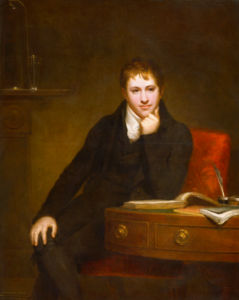
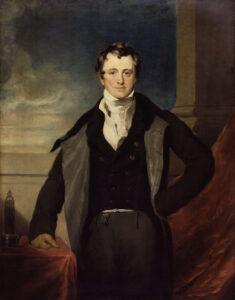
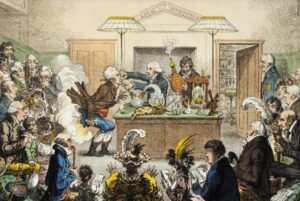
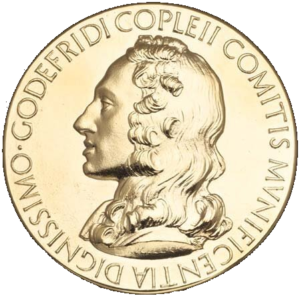
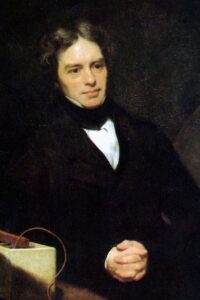
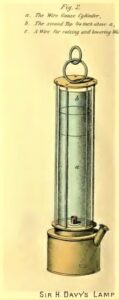
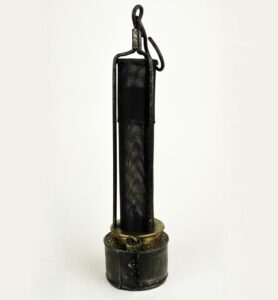
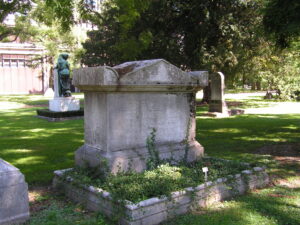
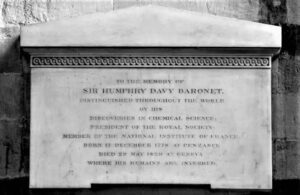
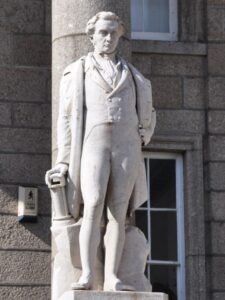
![[48] Voice - Ertach Kernow- 260521A - Shining light in the darkness [S] Ertach Kernow- Shining light in the darkness](https://www.cornwallheritage.com/wp-content/uploads/2021/05/48-Voice-Ertach-Kernow-260521A-Shining-light-in-the-darkness-S-227x300.jpg)
![[48] Voice - Ertach Kernow- 260521B - Shining light in the darkness [S] Ertach Kernow- Shining light in the darkness](https://www.cornwallheritage.com/wp-content/uploads/2021/05/48-Voice-Ertach-Kernow-260521B-Shining-light-in-the-darkness-S-228x300.jpg)